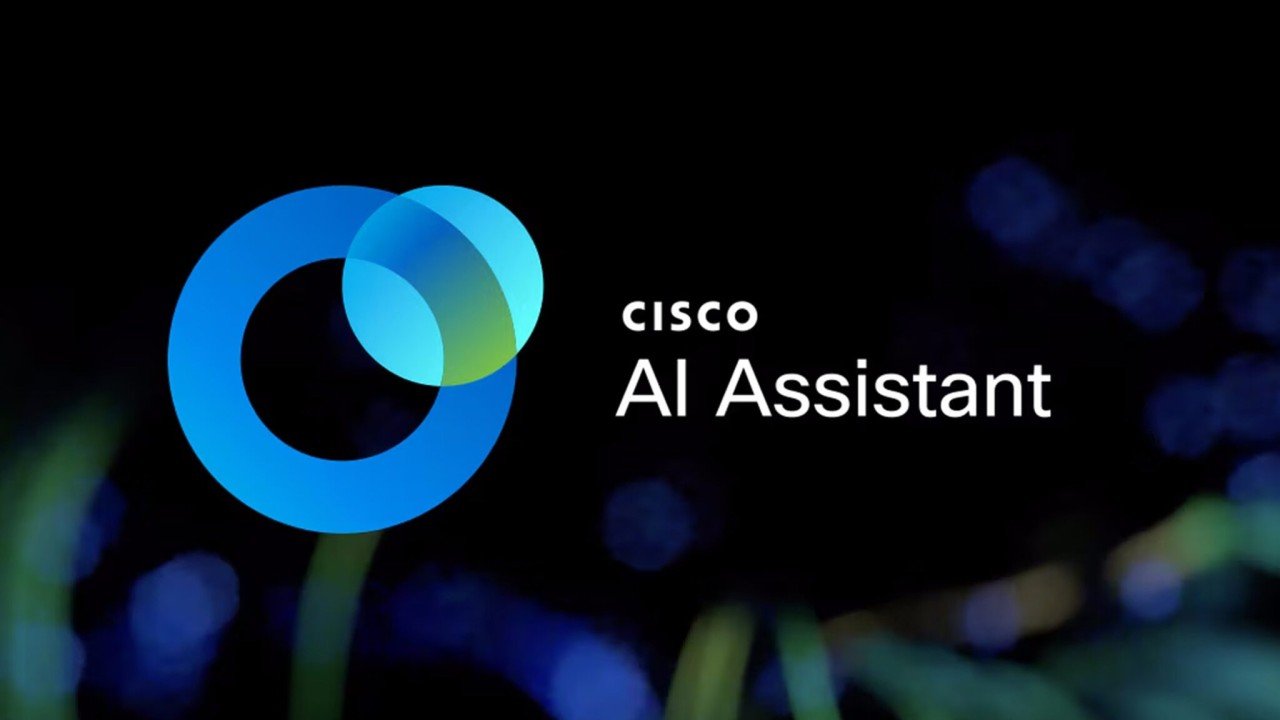San Jose, California – June 2025 — Cisco Systems, the global leader in networking and enterprise communication technology, has officially launched a revolutionary suite of AI Agents aimed at transforming the future of network automation. These AI-driven agents promise to redefine how enterprise networks are monitored, managed, and maintained—ushering in a new era of autonomous digital infrastructure.
With this groundbreaking move, Cisco is not merely advancing network operations—it is reshaping the future of enterprise IT, and potentially redefining how organizations approach everything from connectivity to Cybersecurity.
A Brief History: Cisco’s Road to Autonomous Networks
Founded in 1984, Cisco has been a cornerstone of global internet infrastructure. From the early days of routing and switching hardware to its dominance in unified communications, Cisco’s journey has been a story of evolution.
In the last decade, Cisco has focused heavily on software-defined networking (SDN), intent-based networking, and integrated security. With the rise of cloud computing, IoT, and edge devices, the demand for smarter, self-managing networks has intensified. The vision of an autonomous network—one that can configure, monitor, heal, and secure itself—has been in development for years.
Cisco’s latest announcement represents the culmination of years of R&D in Artificial Intelligence and network data analytics. The AI Agents initiative builds upon prior platforms such as Cisco DNA Center, Meraki Dashboard, and the Nexus Dashboard.
What Are Cisco’s AI Agents?
Cisco AI Agents are intelligent, self-operating software entities embedded within network infrastructure. These agents use machine learning models, predictive analytics, and large datasets to make autonomous decisions in real-time.
Key Capabilities:
- Self-Healing Networks
These agents can detect anomalies, assess root causes, and execute remediation protocols—automatically fixing issues before they affect performance or security. - Predictive Analytics
By leveraging real-time and historical data, the agents can forecast failures, suggest optimizations, and reroute traffic for optimal efficiency. - Security-First Approach
Integrated threat detection allows AI Agents to recognize patterns associated with cyber threats, isolate affected nodes, and apply patches autonomously—without human input. - Natural Language Interface
Network administrators can now interact with their infrastructure using plain language commands like “What’s causing latency in Region A?”—making advanced diagnostics accessible to non-specialists. - Cloud and Edge Compatibility
These agents operate across Cisco’s entire portfolio—from on-prem data centers to multi-cloud environments and remote edge deployments.
The Current Context: Why Now?
Today’s enterprise networks are increasingly complex. Hybrid work, IoT proliferation, and growing cloud dependency have made traditional manual network management obsolete. According to Cisco’s 2024 Global Networking Report, 78% of IT leaders cited network complexity as a top barrier to innovation.
Moreover, network downtime is more costly than ever. A single hour of network outage can cost large enterprises up to $300,000 in lost productivity, reputation damage, and revenue loss.
The demand for proactive, intelligent network automation tools has reached a critical point. Cisco’s AI Agents answer this call—offering a scalable, secure, and adaptable solution that could reduce network downtime by up to 90%, according to early pilot reports.
Deep Dive into Cisco’s AI Strategy
Cisco’s AI Agents are powered by its newly upgraded AI/ML engine, called Cisco Neural NetOps, developed in-house and trained on decades of proprietary network telemetry data.
The engine uses supervised and unsupervised learning models, edge computing principles, and reinforcement learning to improve performance over time. Cisco claims its models achieve over 95% accuracy in fault prediction and 98% accuracy in root cause analysis—a significant jump from earlier tools.
Privacy and Compliance
Cisco emphasized that AI Agents adhere to strict data governance frameworks. Sensitive enterprise data is encrypted both in transit and at rest, with compliance for GDPR, HIPAA, and other global standards. Data used for training is anonymized, and user control over data usage is integral.
A Competitive Edge in the AI Race

With this launch, Cisco joins the elite ranks of tech companies embedding AI into core infrastructure. While Google and Microsoft have introduced AI copilots for software and cloud workflows, Cisco is staking its claim in intelligent infrastructure.
By placing intelligence directly into the fabric of enterprise networks, Cisco differentiates itself from cloud-native competitors and hardware-centric rivals.
Benefits for Enterprises
| Feature | Benefit |
| Self-Healing | Reduces human intervention and downtime |
| Predictive Maintenance | Cuts costs by avoiding unexpected failures |
| Autonomous Security | Minimizes threat response time |
| Multi-Cloud Integration | Simplifies management across AWS, Azure, GCP |
| Intent-Based Interface | Eases onboarding for IT personnel |
Early adopters, including Fortune 500 companies in finance, healthcare, and logistics, report remarkable performance improvements. One global bank reduced incident resolution time from 3 hours to 12 minutes using Cisco AI Agents.
Future Outlook: What Lies Ahead?
Cisco’s vision goes beyond reactive automation. By 2026, it plans to introduce AI Network Architects—agents capable of designing network topologies based on business objectives. Imagine telling your infrastructure, “Deploy a secure, low-latency network for a new retail site,” and having it executed within minutes.
Predictions:
- Smarter Collaboration Tools: Integration with Cisco WebEx and other collaboration platforms to provide real-time QoS tuning during video meetings.
- Expanded Ecosystem: Cisco may open APIs for developers to create their own AI Agent plug-ins, similar to an app store model.
- Cross-Vendor Interoperability: With open networking gaining ground, Cisco might position its AI Agents to operate within third-party environments, offering customers more flexibility.
- AI in IoT and Industrial Networks: By extending AI Agents to industrial control systems, factories and energy grids could gain self-regulating networks with ultra-low latency.
Implications for the Broader AI Landscape
The implications of this launch are immense—not just for Cisco, but for the entire AI Tools industry. Cisco’s deployment is one of the first large-scale implementations of distributed AI in enterprise networking. It serves as a case study for how AI can move beyond analytics dashboards and become an operational layer.
From a market perspective, this reinforces that Machine Learning is not limited to software products—it’s transforming infrastructure. It may also influence other sectors like cloud computing, telecom, and smart cities to invest in similar autonomous technologies.
As AI News continues to highlight AI ethics and trust concerns, Cisco’s secure-by-design approach could become a benchmark for responsible enterprise AI.
Challenges and Considerations
While the launch is promising, several challenges remain:
- Legacy Infrastructure Compatibility: Not all enterprises are ready for intelligent automation due to outdated systems.
- Cost: AI Agents are part of Cisco’s premium enterprise packages. Smaller businesses may find the cost prohibitive.
- Training IT Teams: While AI lowers complexity, it also introduces a learning curve for traditional network engineers.
Cisco is addressing these concerns by offering training, flexible pricing models, and integration partnerships to ease the transition.
Industry and Analyst Reactions
Tech analysts at Gartner hailed the announcement as “a critical milestone in the evolution of network operations.” Industry watchers believe Cisco’s strong foothold in enterprise networks gives it a unique advantage that cloud-native rivals can’t easily replicate.
IDC’s early report predicts that by 2027, over 60% of global enterprise networks will include some form of autonomous AI agents—with Cisco projected to hold the lion’s share.
Final Thoughts: Cisco’s Bet on the Future
Cisco’s launch of AI Agents for autonomous network management is not a small feature rollout—it’s a structural shift. It signals a future where human oversight is strategic rather than operational, and where networks anticipate problems rather than react to them.
By combining decades of expertise in networking with cutting-edge Artificial Intelligence, Cisco is setting the stage for a smarter, faster, and more resilient digital world.
Call to Action:
🔗 Stay informed on Cisco’s AI developments and other transformative tech news.
📬 Subscribe to TechThrilled’s newsletter for in-depth breakdowns and industry insights.
💬 Join the conversation in the comments—What are your thoughts on autonomous networks?
📣 Share this article with your peers and IT teams shaping the future of enterprise technology.
